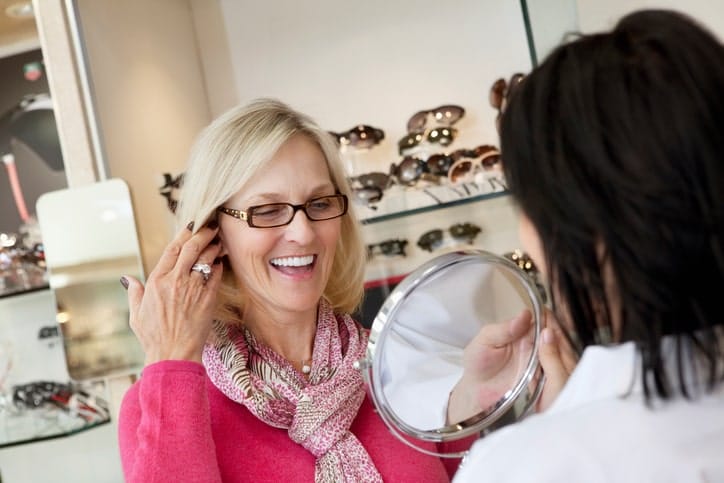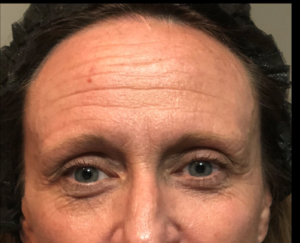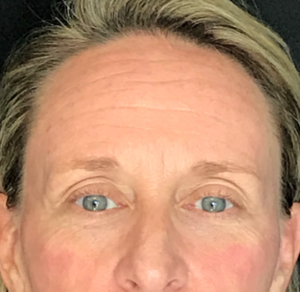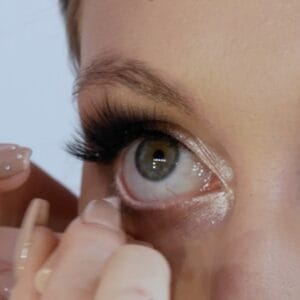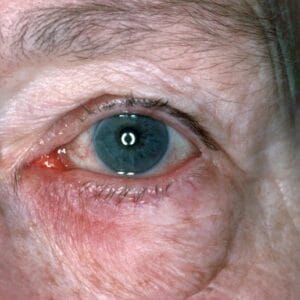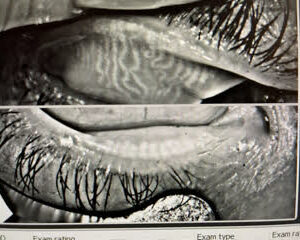April 11, 2023
“There is just nothing here; everything looks terrible.” That was the exasperation expressed years ago by a patient in my optical trying on frames after her comprehensive eye exam. This was her first pair of glasses . . . ever. I had just diagnosed her with presbyopia and prescribed her progressive addition spectacles. She was struggling to find something in which she would be comfortable and happy.
An Emotional Response to Presbyopia
At the time, I had close to 1,000 frames in inventory, so I knew that her frustration was about more than not being able to find a frame. There were a few “maybes,” so my optician asked for my help with those few choices.
With tears in her eyes my patient nearly broke my heart when she said, “Look at my face. You have beautiful frames, but my face is ugly. Nothing is ever going to look good on me.”
The emotions patients experience during the aging process are vast. We as eye care providers often have a front row seat to patients getting this first glimpse at mortality. Many times, it is presbyopia, the loss of near vision, that is the first, tangible, uncontrollable, frustrating realization that “Midlife is not a crisis. Midlife is an unraveling,” as professor, author, and podcast host Brené Brown puts it.
Presbyopia’s Five Stages of Grief
A patient’s reaction to being diagnosed with presbyopia can be demonstrated by the five stages of grief written about four decades ago by David Kessler and Elisabeth Kübler-Ross: denial, anger, bargaining, depression, and acceptance.
We have all witnessed this, usually over a sequence of multiple visits:
Denial . . . OD: “Are you struggling with your near vision?” Patient: “Nope.”
Anger . . . OD: “Really, hmm, can you show me a text on your phone?” Patient: (uncomfortably squirming and reluctantly pulling out their phone to see how much they have enlarged their text) “I’m busted. Fine!” (Incidentally, FINE stands for Feelings I’m Not Expressing.)
Bargaining . . . Patient: Okay, so I have the text font size increased a little bit. Okay, so it’s big enough to see from the international space station. Is that a problem? Please don’t judge.”
Depression and eventually Acceptance follow when they come back into my office months or sometimes even at their next comprehensive visit. It usually sounds something like this, “You talked to me about this last year, I’m ready to do something about it.”
For patients diagnosed with presbyopia, especially for the first time, it is incredibly frustrating and often makes them “feel” old. This problem of presbyopia is a challenge, but with challenge comes opportunity. If we think differently as optometrists, we can lean into these challenges and opportunities to not only help our patients but also to grow our practices.
Aesthetics for the Aging Process
Patients with presbyopia also experience many other accompanying aesthetic symptoms. Not only do they feel older because they can no longer see well up close, but the face in the mirror staring back at them has also changed. The periocular area is often the first place on the body to show aging. The periocular skin is only 0.5 mm thick, fully half of what is found on the rest of the body.
Patients can begin to experience a multitude of symptoms including rhytids in critical areas: between the eyes (the dreaded “11s”), on the outer canthus (the crow’s feet,) and across the forehead (the worry lines). Droopy eyelids, volume loss, skin laxity, photodamage, skin discolorations such as rosacea (which can also contribute to dryness), dark circles, bags, lumps, bumps, are just a few of the aging symptoms that become visible around the eye.
How do you as an eye care provider address patients’ aesthetic needs during their comprehensive eye exam? Be an astute observer and ask great questions. Assess a patient’s face by the following:
- a funny head tilt or chin tilt
- “recruiting” the frontalis muscle in the forehead to pull up droopy brows or lids
- rhytids that appear at rest and in motion in critical areas such as the glabella, outer canthus, and forehead
- signs of blepharoptosis or dermatochalasis
- photodamage or rosacea
- dark circles or puffiness under the eyes
- volume loss, especially in the temples and midface
- lumps or bumps (The eyelids are the most common place on the body to get skin cancer, so ensure every one of your patients is prescribed ophthalmic sun lenses.)
- lid malposition, floppy lids, ectropion, entropion (Perform the snap test of lower and upper lids to assess.)
- lash health, placement of cosmetics, and beauty habits such as extensions (Have patients look down behind the slit lamp.)
Here are some great questions to ask your patients. Some of these are part of my intake questionnaire for all my comprehensive patients:
- Wow, your lashes are really long, is that natural or are you using a serum (isopropyl cloprostenate)?
- How do you clean your extensions?
- Do you wear eye make-up?
- How do you remove your make-up?
- Do you ever sleep in your eye make-up?
- Did you know many of the products we use around our eyes could cause eye health issues today or in the future?
- Do your eyelids bother you?
- Do you want your eyes to be more open?
- Did you know the delicate eye area is a very common place for skin cancer?
- Do you experience red eyes?
- In a perfect world, what would you change about your appearance?
- Fewer forehead wrinkles, frown lines, crow’s feet?
- Tighter skin around lids?
- Less sun damage or redness?
- Skin that glows?
- Dark circle reduction?
- Puffy eye reduction?
Incorporating this mindset of opportunity, properly assessing the patient, and asking the right questions will bridge the comprehensive eye care you are already providing to the best aesthetics you can offer.


